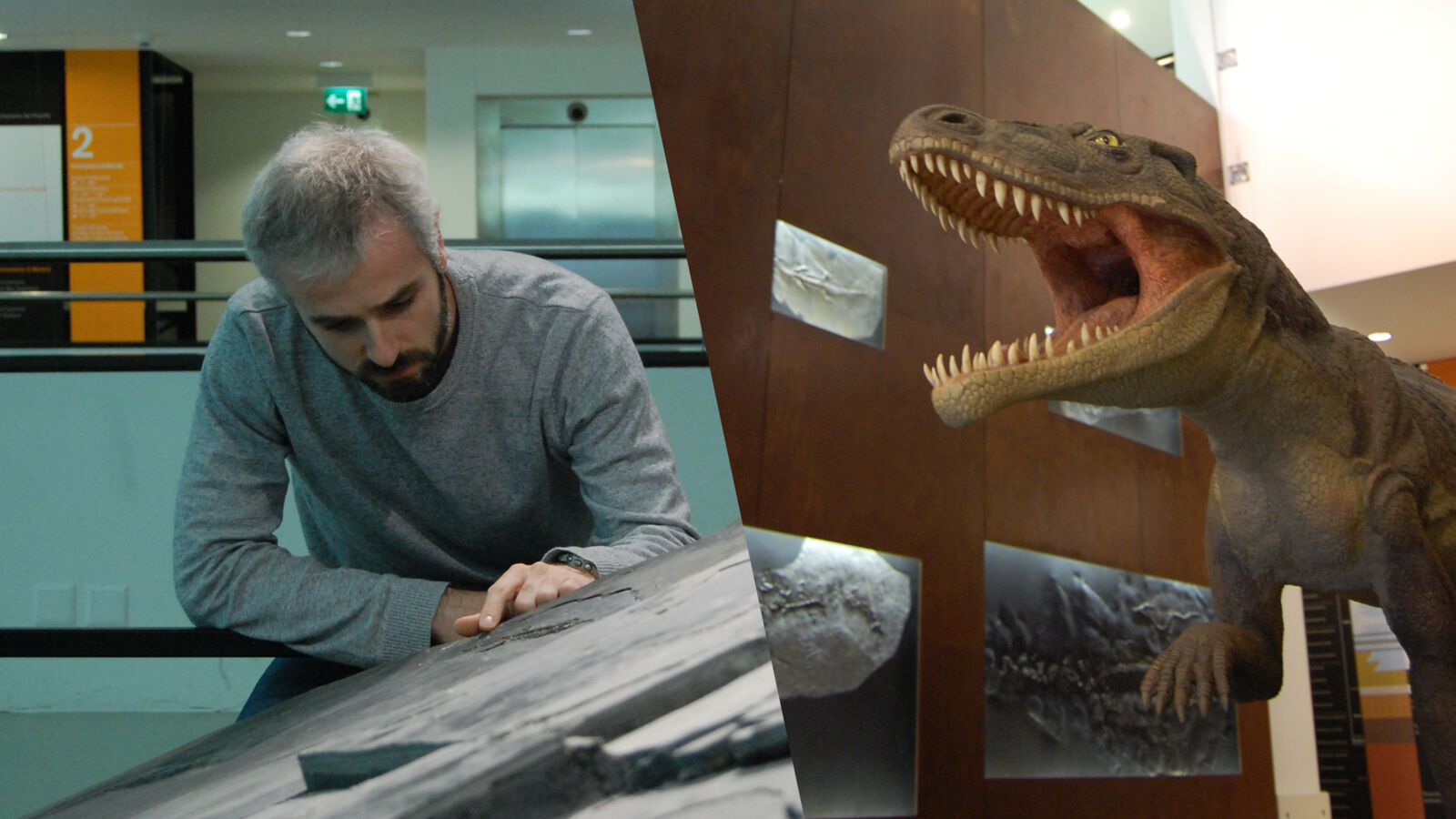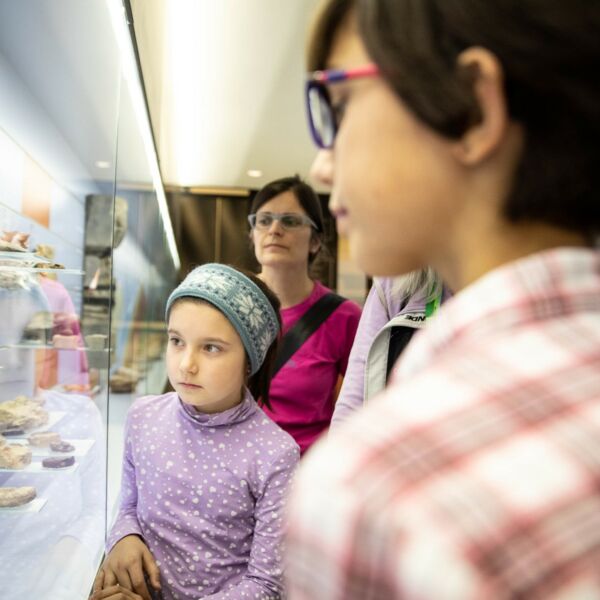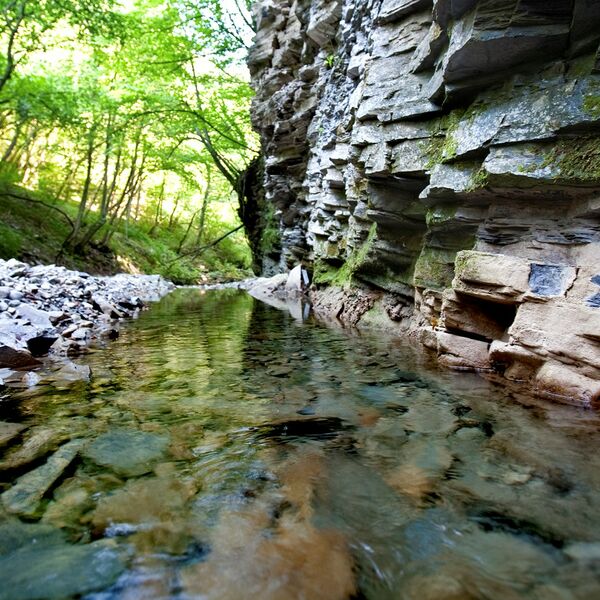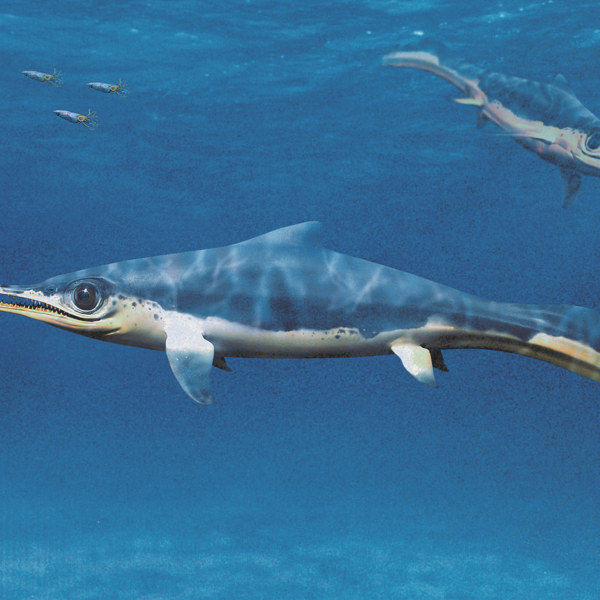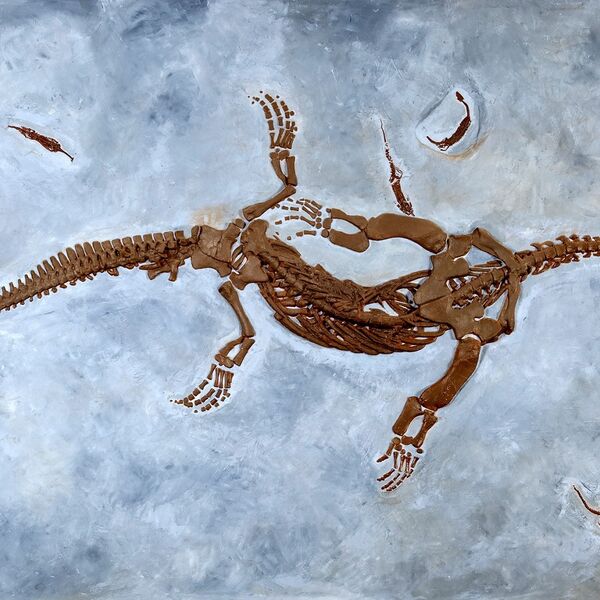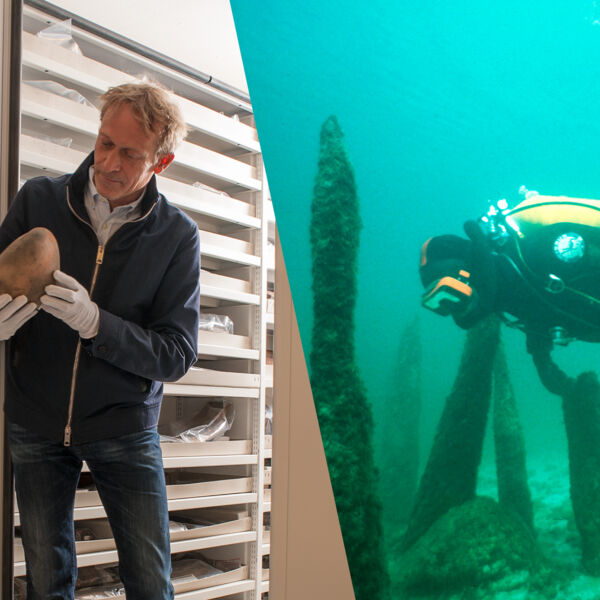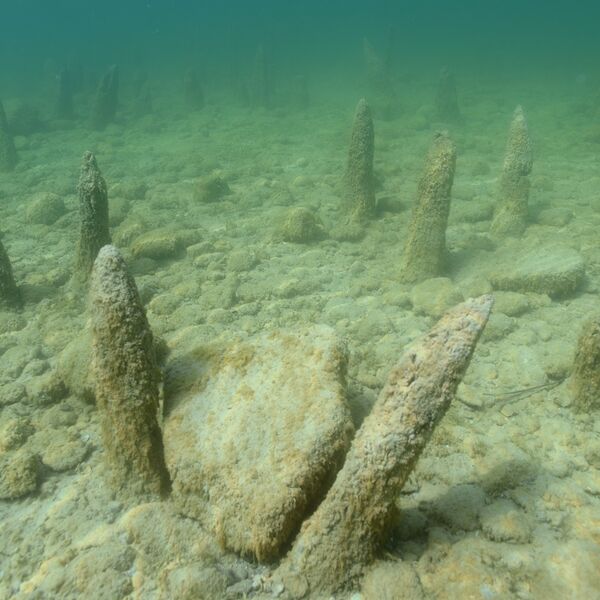Monte San Giorgio
Luca Zulliger
Direktor des Fossilienmuseums des Monte San Giorgio
Welche Rolle spielen Sie in Bezug auf das Welterbe Monte San Giorgio?
Im Fossilienmuseum von Meride kann man zahlreiche Fossilien von Lebewesen bewundern, die ein heute verschwundenes äquatoriales Meer bewohnten. Das Museum hat die Aufgabe, dieses Erbe von Weltbedeutung dank verschiedener Kooperationen mit Institutionen und Einrichtungen in der Region und darüber hinaus, zu verbreiten und zu bewahren. Besonders wichtig ist die Zusammenarbeit mit dem Kantonalen Museum für Naturgeschichte (MCSN), das sich mit paläontologischen Ausgrabungen und wissenschaftlicher Forschung befasst. Die Bedeutung dieser beiden Bereiche ist von grundlegender Bedeutung, um die Erinnerung an diese Stätte nicht zu "versteinern". Es handelt sich um die wichtigste fossile Fundstelle aus dieser Zeit. Die aussergewöhnliche Vielfalt und der Erhaltungszustand dieser Fossilien garantierten 2003 die Aufnahme in die UNESCO-Welterbeliste. In den Sedimentgesteinen, die den Monte San Giorgio bilden, finden wir mindestens 6 fossile Schichten, die auf die Mitteltrias (vor 247-237 Millionen Jahren) zurückgehen.
Welchen Bezug haben Sie zum Monte San Giorgio?
Seit meiner Kindheit habe ich immer eine Leidenschaft für die Geowissenschaften gehabt, insbesondere für Geologie und Paläontologie. Nachdem ich fast 7 Jahre in Freiburg für ein Universitätsstudium verbracht hatte, erlaubte mir die Gelegenheit, am Material des Monte San Giorgio zu arbeiten, wieder ins Tessin zurückzukehren und dort zu leben. Nach fast 6 Jahren der Zusammenarbeit mit dem MCSN, in denen ich auch aktiv an verschiedenen wissenschaftlichen Ausgrabungskampagnen teilnehmen konnte, kam die grosse berufliche Chance, das Fossilienmuseum des Monte San Giorgio zu leiten. Den Weg dieser 240 Millionen Jahre alten Tiere von der Gewinnung bei der Ausgrabung über die paläontologische Aufbereitung bis hin zum Studium und der Ausstellung im Museum verfolgen zu können, ist etwas Unbeschreibliches.
Welches ist Ihr Lieblingsort auf dem Monte San Giorgio?
Auf einem Klappstuhl oder einer Wärmematte zu sitzen und entweder an der warmen Sonne oder in der Kälte und im Regen zu arbeiten. Es mag paradox klingen, aber das sind meine Lieblingsbedingungen, wenn ich auf dem Monte San Giorgio bin. Für einen Paläontologen bleibt die Zeit der Ausgrabung, selbst bei ungünstigen Wetterbedingungen, die faszinierendste und aufregendste Tätigkeit. Die Tage, die man mit dem Hammer in der Hand verbringt, um etwas auszugraben, das seit 240 Millionen Jahren niemand anderes gesehen hat, sind unbezahlbar.
Wann ist die beste Zeit für einen Besuch der Stätte?
Neben dem Fossilienmuseum bietet der Monte San Giorgio mehrere Wanderwege und einen geopaläontologischen Pfad. Es gibt keine besonders geeignete Zeit, um uns zu besuchen. Für Aktivitäten im Freien ist sicherlich die Jahreszeit von Frühjahr bis Herbst am besten, während das Museum das ganze Jahr über geöffnet ist.
Welche Aktivität empfehlen Sie besonders?
Wenn Sie früh morgens in Meride ankommen, schlage ich vor, dass Sie über Cassina zum Gipfel des Monte San Giorgio aufbrechen, wo Sie einige Ausgrabungsstätten sehen. Oben angekommen, kann man das fabelhafte 360-Grad-Panorama bewundern, das von den Alpen bis zur Poebene reicht. Zu Ihren Füssen stets der Lago di Lugano. Wenn man in Richtung "Crocifisso" hinuntergeht, kommt man neben der Ausgrabung "Punto 902" vorbei. In nur 10 Minuten kann man die Ausgrabung "Acqua del Ghiffo" erreichen. Auf dem Weg nach Meride kommen Sie an der Spinirolo-Fabrik vorbei, wo im letzten Jahrhundert die berühmte "Saurolo"-Salbe, ein echtes Steindestillat, hergestellt wurde. Sobald Sie im Dorf angekommen sind, haben Sie genügend Zeit, das Fossilienmuseum zu besuchen.
Oktober 2016
